The Ultimate Kimono Posing Guide: 25+ Stunning Photo Poses for Traditional Japanese Elegance

For the ultimate kimono photography experience in Kyoto, consider booking with AllPhoto Kyoto for professional guidance, authentic locations, and expert photography services that will help you create stunning kimono memories that last a lifetime.
Master the art of kimono photography with expert posing techniques that capture authentic Japanese beauty and grace
- Table of Contents
- Introduction to Kimono Photography
- Essential Kimono Posing Fundamentals
- Traditional Accessories and Props for Authentic Kimono Photos
- Creative Kimono Poses with Japanese Sweets
- Modern Trendy Kimono Poses for Contemporary Photography
- Female Kimono Posing Techniques
- Male Kimono Posing Styles
- Captivating Back View Kimono Shots
- Professional Kimono Photography in Kyoto
- Advanced Kimono Posing Tips
- Conclusion: Mastering the Art of Kimono Photography
Table of Contents
- Introduction to Kimono Photography
- Essential Kimono Posing Fundamentals
- Traditional Accessories and Props
- Creative Kimono Poses with Japanese Sweets
- Modern Trendy Kimono Poses
- Female Kimono Posing Techniques
- Male Kimono Posing Styles
- Captivating Back View Kimono Shots
- Professional Kimono Photography in Kyoto
- Advanced Kimono Posing Tips
Introduction to Kimono Photography
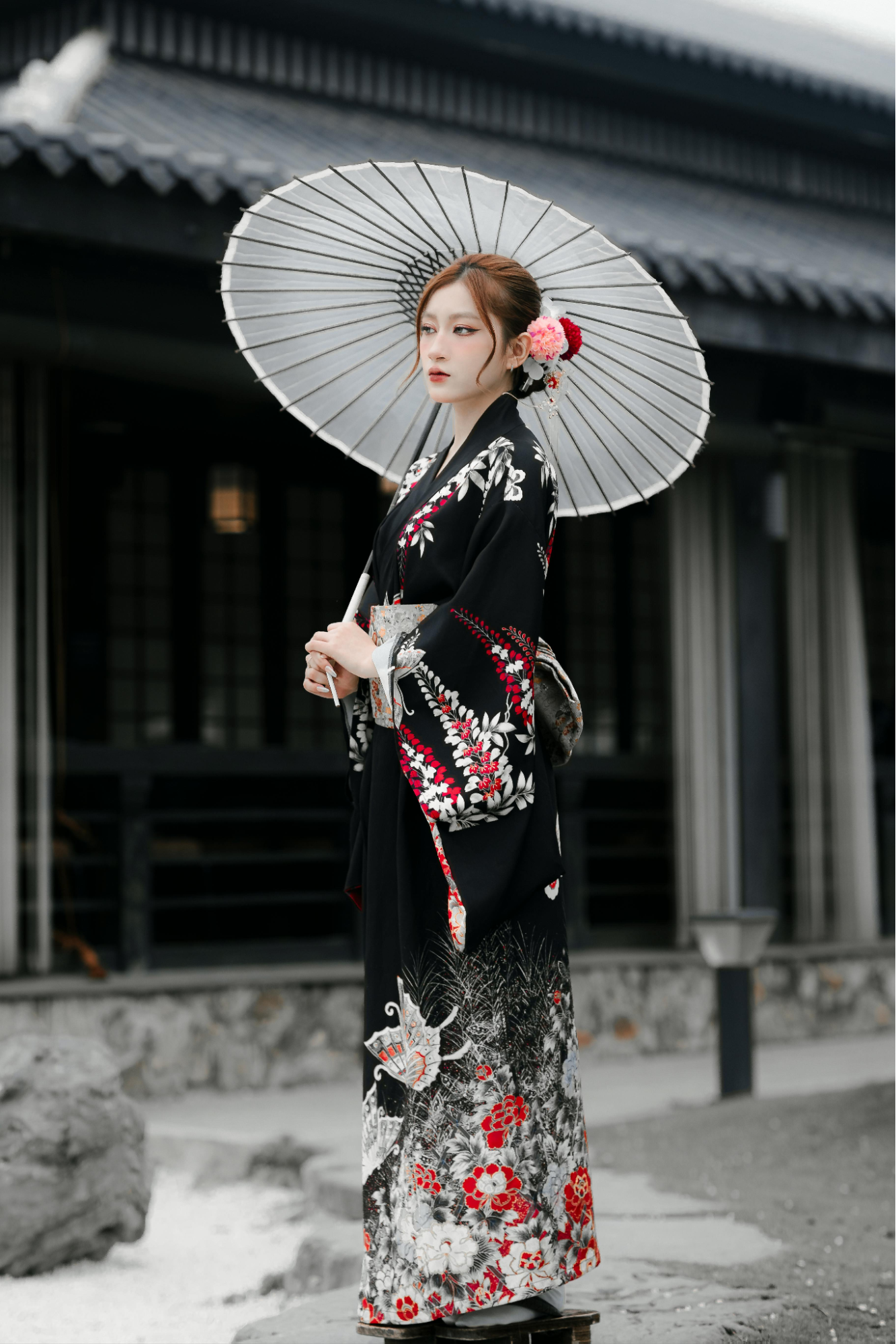
Kimono photography has become increasingly popular among travelers visiting Japan and photography enthusiasts worldwide. The traditional Japanese garment, with its flowing silhouette and intricate patterns, creates stunning visual narratives when photographed correctly. However, achieving breathtaking kimono photos requires more than just wearing the garment – it demands understanding proper posing techniques, cultural sensitivity, and artistic composition.
This comprehensive kimono posing guide will teach you 25+ professional posing techniques used by top photographers in Kyoto, Tokyo, and other Japanese cultural centers. Whether you’re planning a kimono photoshoot for your Japan travel memories or professional portfolio, these poses will help you capture the elegance and authenticity of traditional Japanese culture.
Essential Kimono Posing Fundamentals
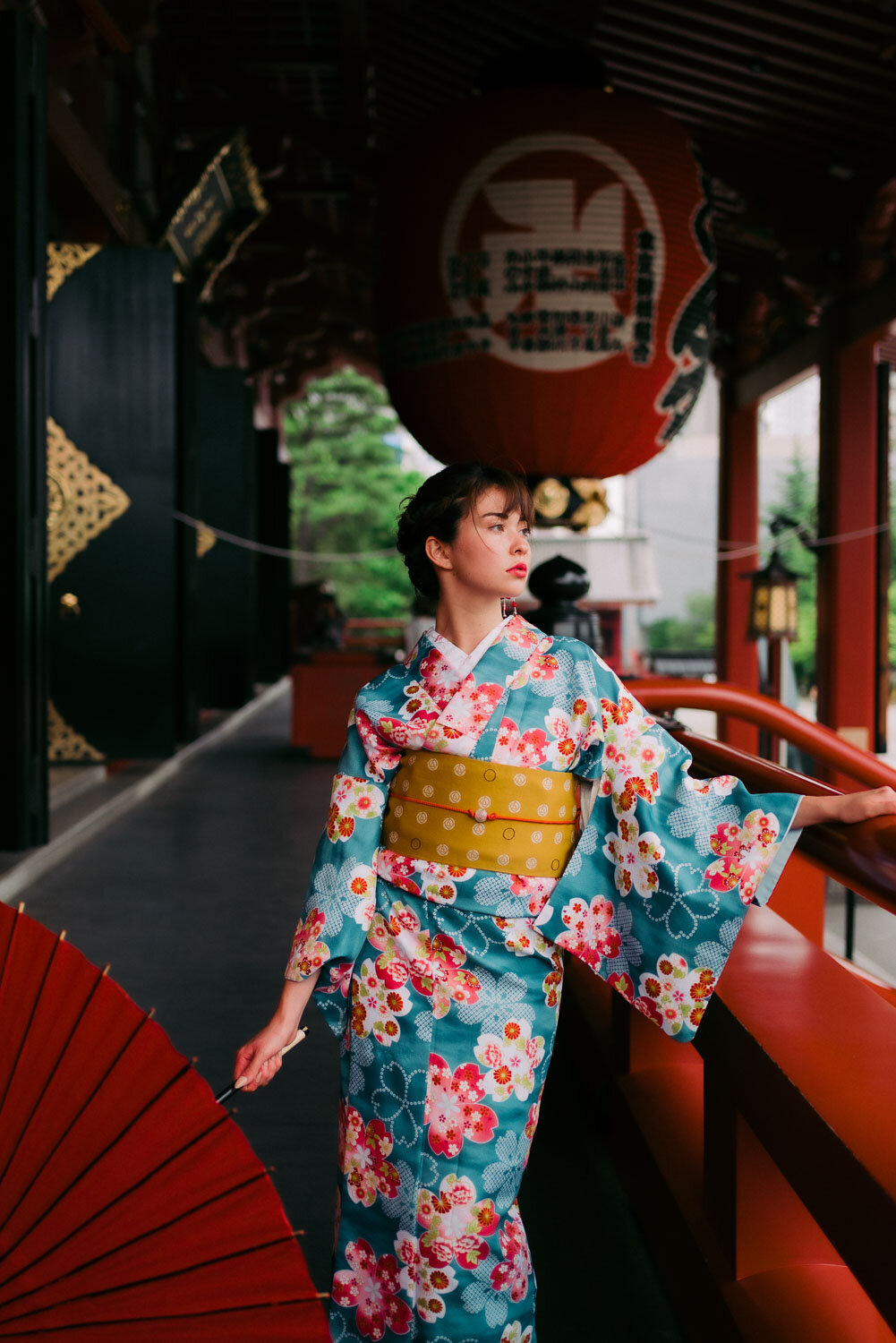
Understanding Kimono Structure for Better Poses
The kimono’s unique construction – with its wide sleeves (furisode), decorative obi belt, and flowing fabric – creates specific opportunities for elegant posing. Professional kimono photographers emphasize these key fundamentals:
Core Posing Principles:
- Align kimono motifs with your body posture to highlight intricate designs and patterns
- Maintain soft, curved hand positions that echo the kimono’s graceful fabric flow
- Curl toes slightly when standing to create natural, feminine foot angles
- Distribute weight evenly or shift slightly backward for delicate, balanced positioning
- Angle your torso subtly to showcase the ornate obi and kimono’s back design
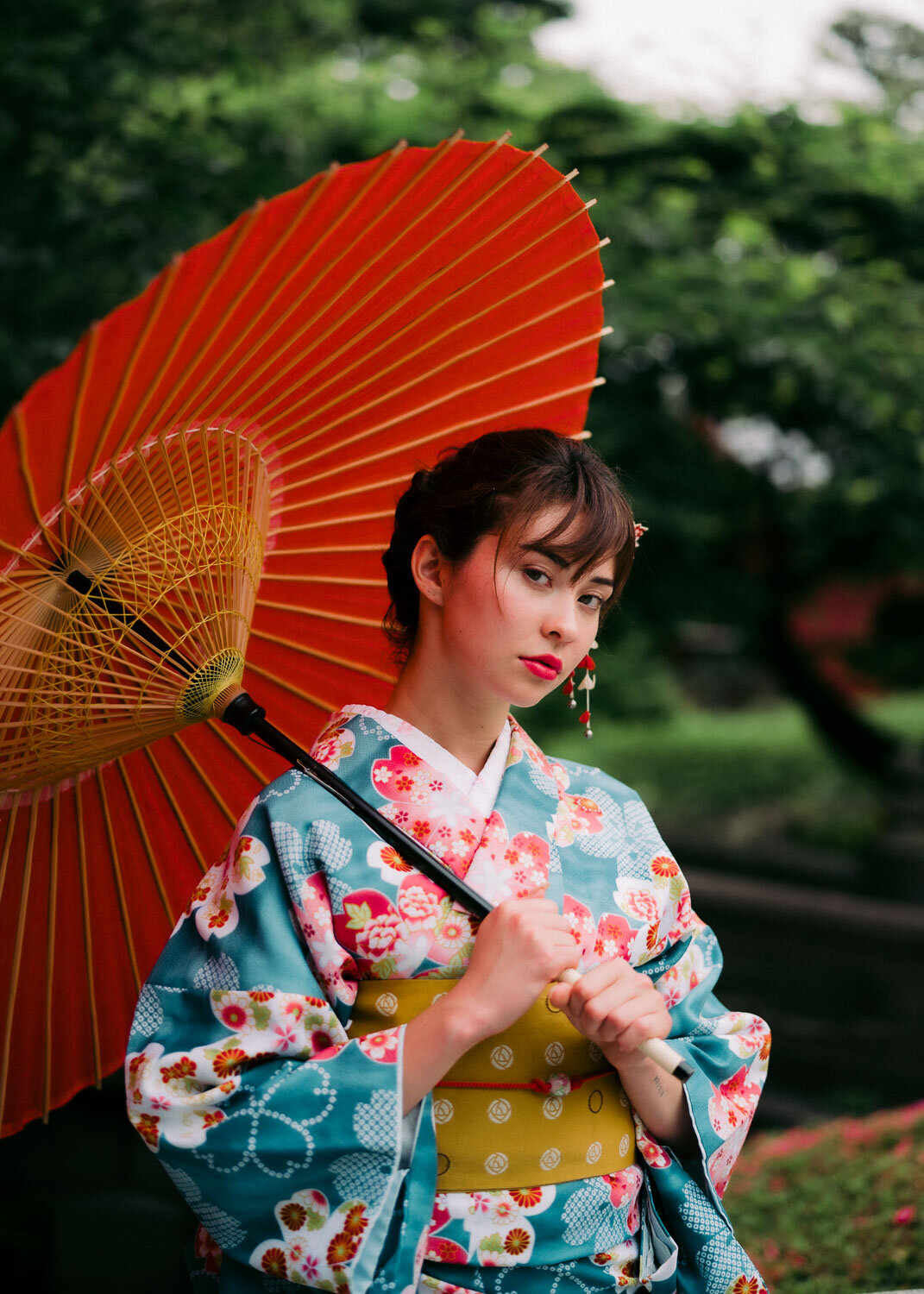
Proper Body Alignment Techniques
Achieving the perfect kimono pose starts with understanding traditional Japanese aesthetics. The concept of “iki” (refined elegance) should guide every movement. Keep your spine straight but relaxed, shoulders gently sloped, and movements deliberate yet graceful.
Professional Tip: Practice these fundamental positions in front of a mirror before your kimono photoshoot to develop muscle memory and confidence.
Traditional Accessories and Props for Authentic Kimono Photos
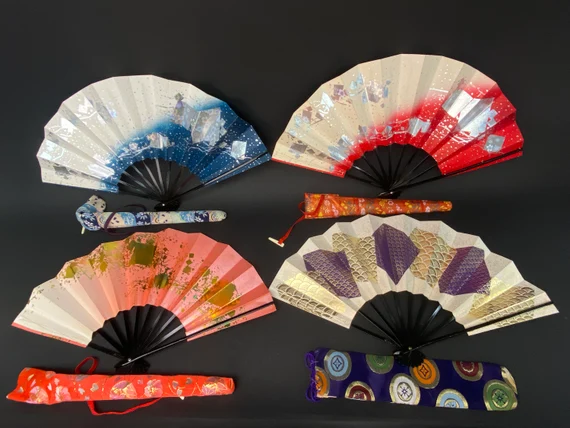
Must-Have Traditional Items for Kimono Photography
Incorporating authentic Japanese accessories elevates your kimono photos from simple portraits to culturally rich artistic statements. These traditional items not only enhance visual appeal but also create natural hand positions and dynamic compositions.
Essential Kimono Photography Props:
Sensu (Folding Fan)
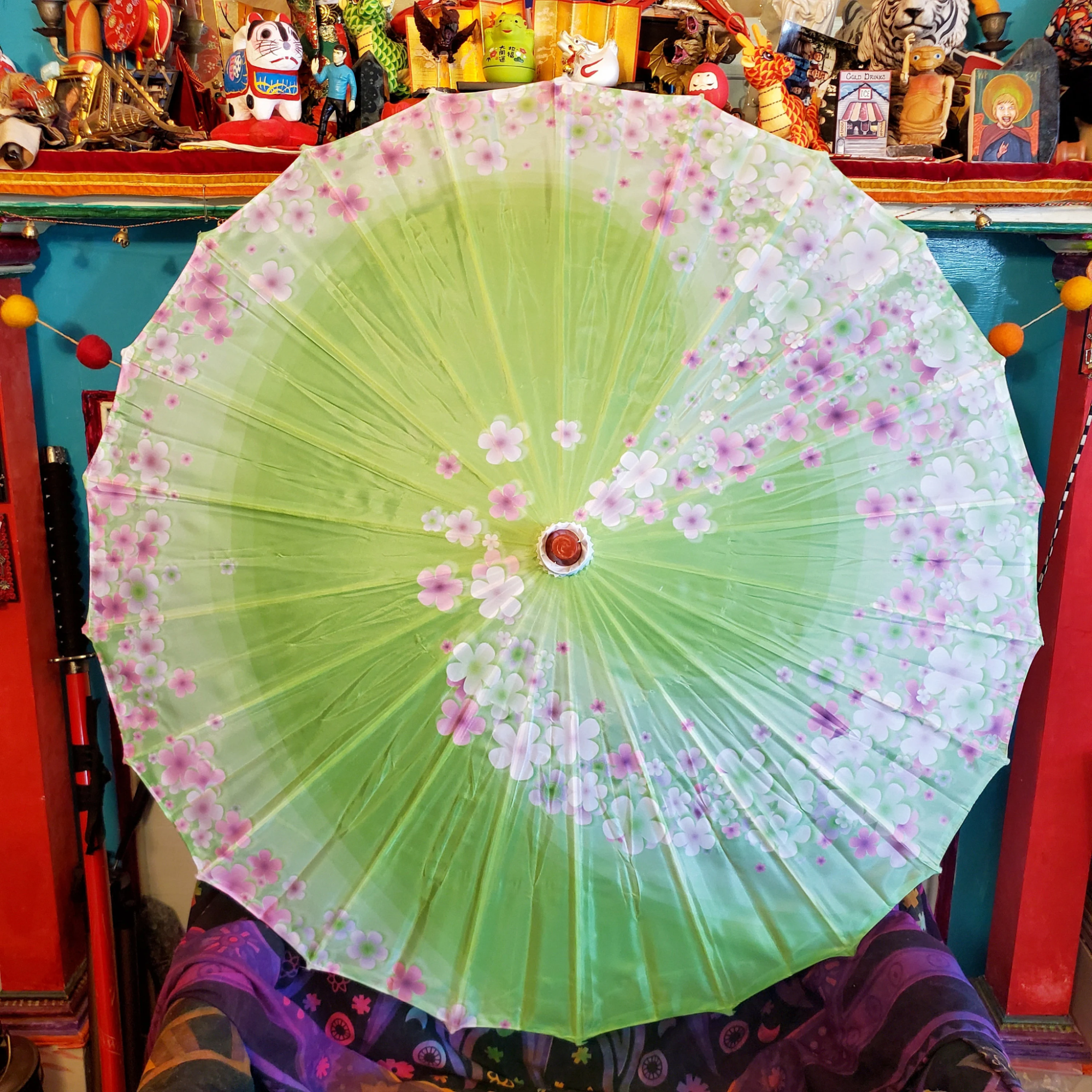
- Creates elegant hand positioning and adds movement to static poses
- Directs viewer attention to facial expressions and kimono details
- Available in various designs to complement different kimono styles
Wagasa (Traditional Oil-Paper Umbrella)
- Provides beautiful filtered lighting and creates dramatic shadows
- Adds depth and cultural authenticity to outdoor kimono photography
- Perfect for creating romantic, vintage-inspired compositions
Geta (Traditional Wooden Sandals)
- Essential for full-length kimono portraits showcasing complete traditional attire
- Adds height and creates elegant leg positioning
- Provides authentic cultural context for your kimono photoshoot

Kanzashi (Traditional Hair Ornaments)
- Complements kimono colors and patterns for cohesive styling
- Creates focal points in close-up kimono portraits
- Represents seasonal themes and cultural meanings
Cultural Accessories:
- Small traditional bags (kinchaku) for storytelling elements
- Ichimatsu dolls for adding cultural narratives
- Traditional tea ceremony items for thematic compositions
Creative Kimono Poses with Japanese Sweets
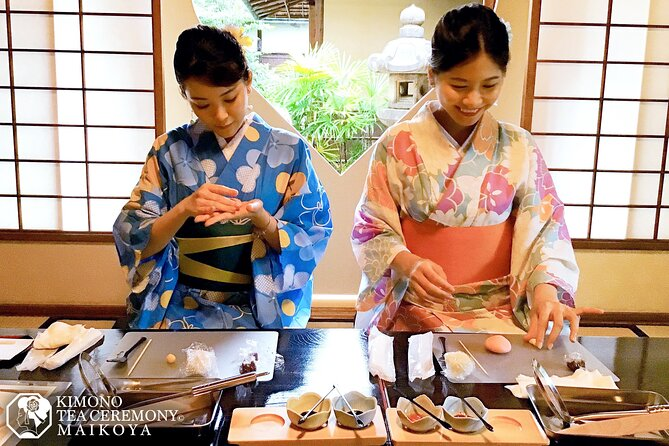
Combining Traditional Elegance with Playful Elements
One of the most popular trends in modern kimono photography involves incorporating colorful Japanese sweets (wagashi) and confectionery. This creative approach balances traditional elegance with contemporary playfulness, creating Instagram-worthy kimono photos that appeal to modern audiences.
Wagashi and Kimono Photography Techniques:
Traditional Japanese Sweets Integration:
- Wagashi presentation poses: Hold traditional sweets delicately between fingertips, showcasing both the kimono’s sleeve details and the confectionery’s artistry
- Seasonal coordination: Match wagashi colors with your kimono’s seasonal patterns (cherry blossoms, autumn leaves, winter motifs)
- Cultural storytelling: Use sweets to represent traditional Japanese tea ceremony aesthetics
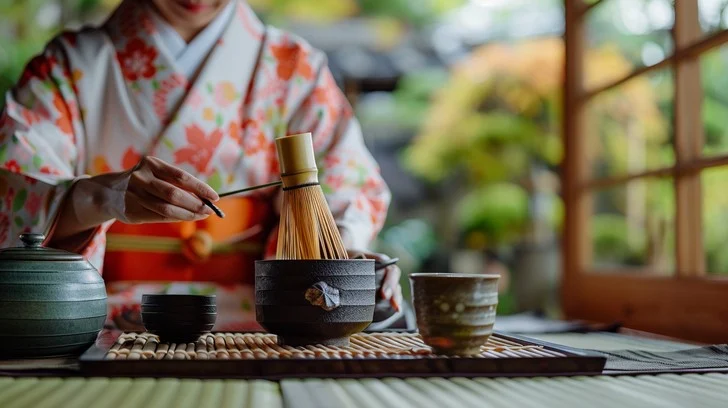
Modern Sweet Photography Ideas:
- Colorful macaron displays: Create vibrant contrasts against muted kimono tones
- Playful interaction poses: Lift sweets toward your lips for candid, joyful expressions
- Backdrop decoration: Arrange sweets around your kimono photoshoot location for immersive compositions
- Color coordination: Use sweets as accent colors to highlight specific kimono patterns and motifs
Professional Sweet and Kimono Styling Tips
When combining sweets with kimono photography, consider the overall aesthetic balance. Bright, modern sweets work best with contemporary kimono styles, while traditional wagashi complement formal, classical kimono designs.
Modern Trendy Kimono Poses for Contemporary Photography
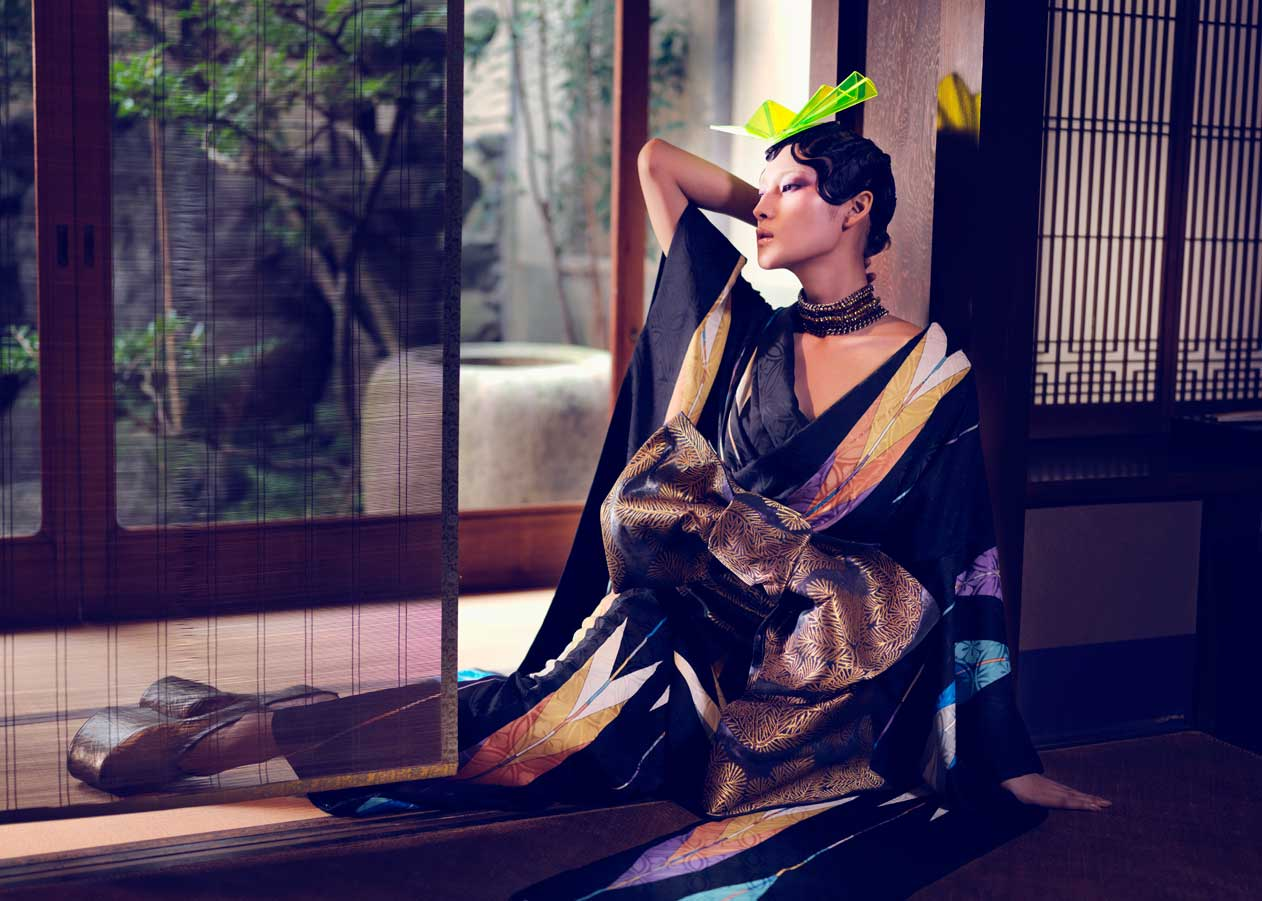
Blending Traditional and Modern Aesthetics
Contemporary kimono photography successfully merges traditional Japanese elegance with modern posing techniques. These trendy poses maintain cultural respect while appealing to today’s social media-savvy audiences.
Contemporary Kimono Posing Techniques:
Dynamic Movement Poses:
- Noh-inspired stance: Adopt subtle knee bends reminiscent of traditional Japanese theater
- Half-profile positioning: Angle your body to accentuate shoulder draping and kimono silhouette
- Waist rotation: Create fabric movement and visual interest through gentle torso turns
- En pointe foot positioning: Extend onto toes for added height and elegance
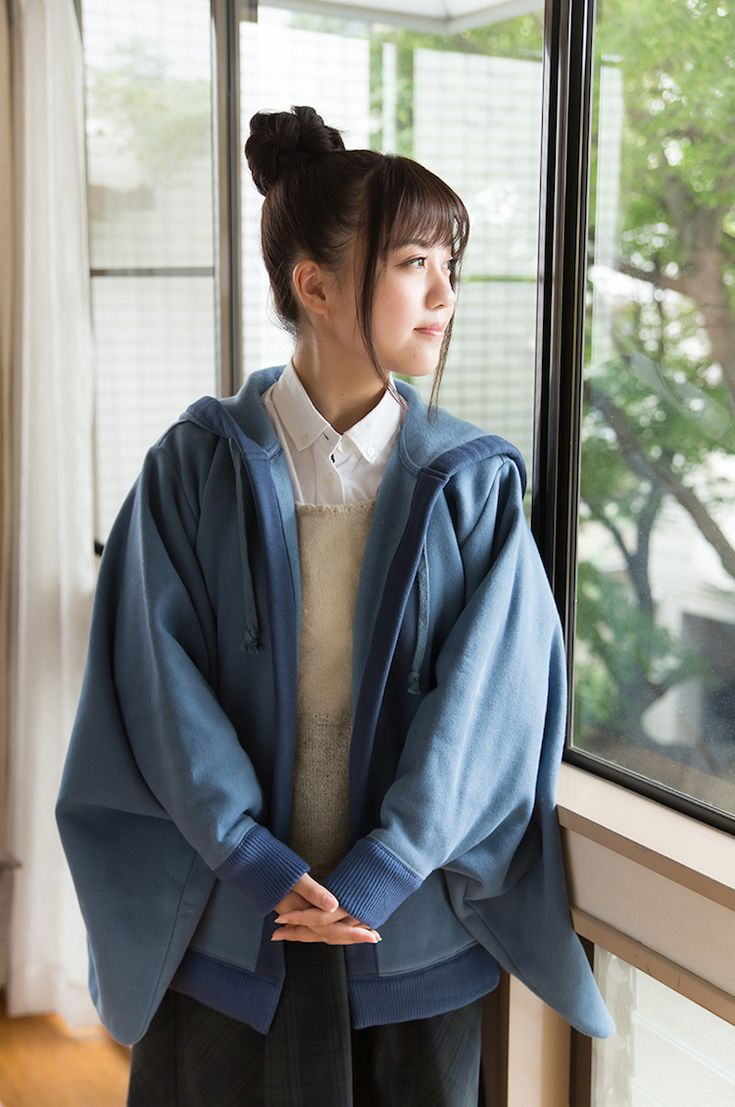
Modern Lighting and Composition:
- Natural light photography: Shoot during golden hour for warm, flattering illumination
- Texture emphasis: Position yourself to highlight kimono fabric details and patterns
- Architectural backdrops: Use modern Japanese architecture as contemporary contrast
- Minimalist compositions: Focus on clean lines and negative space for modern appeal
Social Media-Optimized Kimono Poses
For Instagram and other social platforms, consider poses that work well in square formats and create engaging visual stories. These contemporary approaches maintain traditional respect while maximizing social media impact.
Female Kimono Posing Techniques
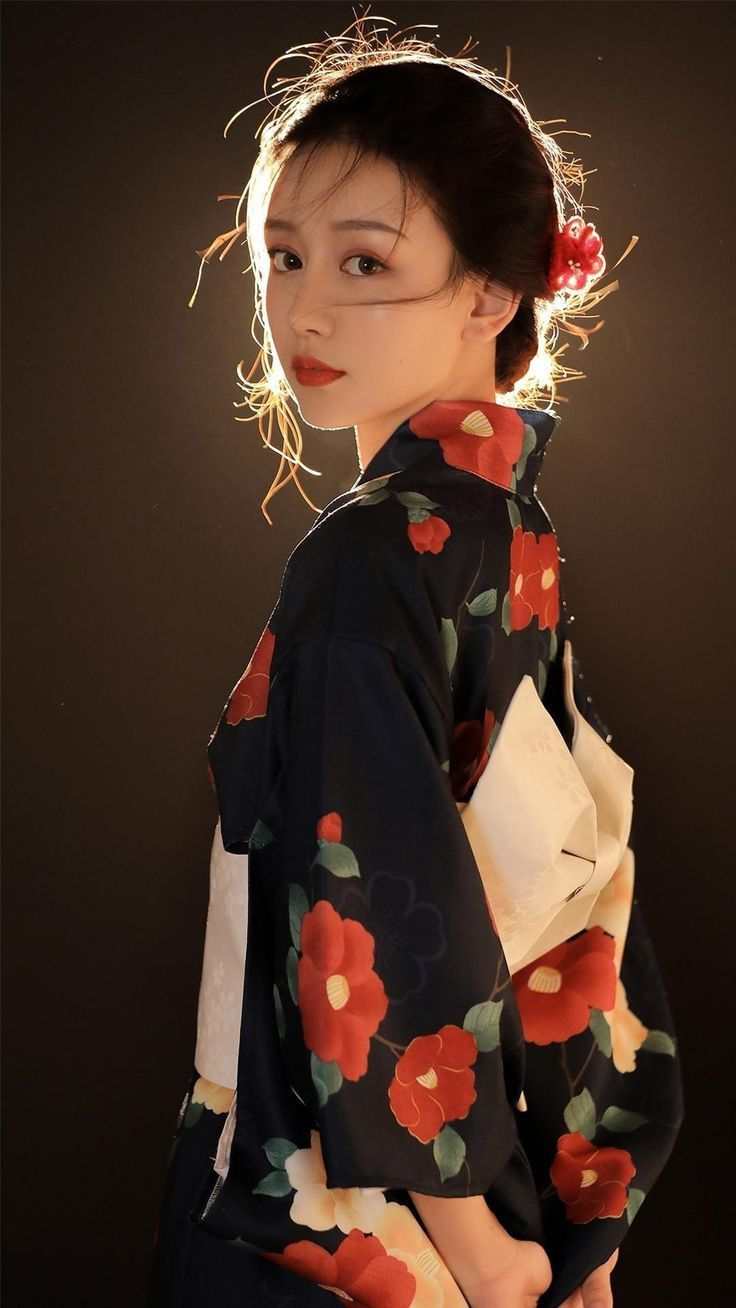
Elegant Feminine Poses for Women’s Kimono Photography
Women’s kimono posing emphasizes grace, elegance, and the garment’s feminine silhouette. Traditional Japanese concepts of beauty inform these posing techniques, creating timeless, sophisticated photographs.
Classic Female Kimono Poses:
Facial Expression and Eye Contact:
- Serene expressions: Maintain gentle, peaceful facial expressions that reflect traditional Japanese beauty ideals
- Subtle smile variations: Practice coy smiles and serene looks that complement different kimono styles
- Chin positioning: Tilt your chin slightly downward for optimal camera engagement and elegant neck lines
- Eye direction: Vary between direct camera contact and demure, downward gazes

Hand and Arm Positioning:
- Layered hand placement: Gently place one hand over the other at waist height for classical elegance
- Uchiwa (fixed fan) poses: Hold traditional fans lightly for understated sophistication
- Sleeve manipulation: Showcase kimono sleeves through graceful arm movements and positioning
- Obi interaction: Lightly touch or adjust the obi belt for natural, comfortable poses
Standing and Walking Poses:
- Feet positioning: Place feet slightly apart for stable, comfortable standing poses
- Weight distribution: Shift weight gracefully between feet for natural movement
- Walking techniques: Take small, deliberate steps that maintain kimono’s elegant draping
Traditional vs. Contemporary Female Poses
Modern female kimono photography balances traditional Japanese femininity with contemporary confidence. Consider your kimono style, photoshoot location, and personal comfort when selecting poses.
Male Kimono Posing Styles
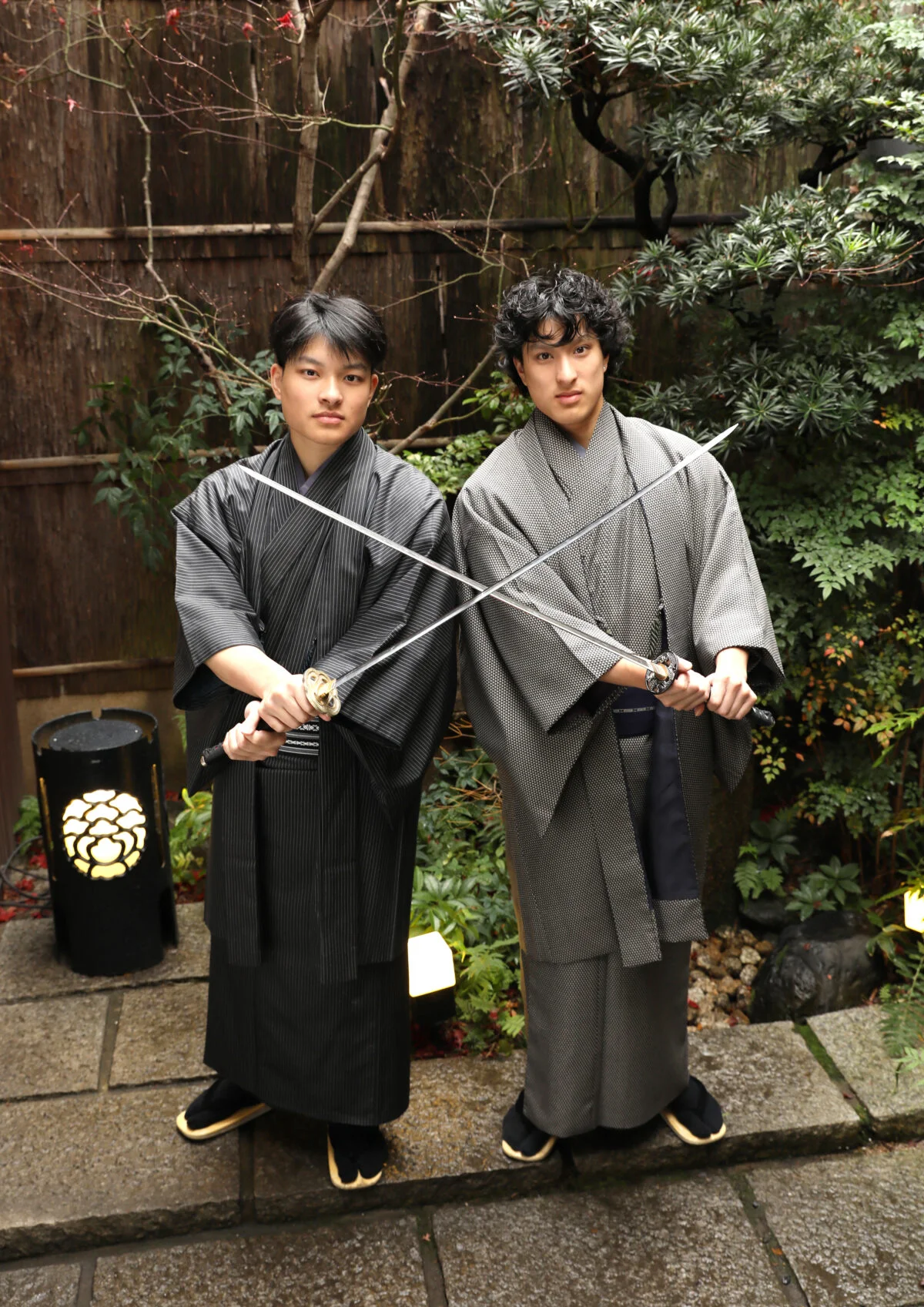
Masculine Elegance in Traditional Japanese Attire
Men’s kimono photography requires different techniques that emphasize strength, dignity, and traditional masculine aesthetics. These poses maintain cultural authenticity while showcasing the kimono’s elegant design.
Masculine Kimono Posing Fundamentals:
Confident Stance Techniques:
- Wider stance positioning: Adopt slightly wider foot positioning for authoritative presence
- Shoulder positioning: Angle shoulders strategically to reveal intricate kimono details and patterns
- Chest positioning: Maintain proud, upright posture that communicates confidence and dignity
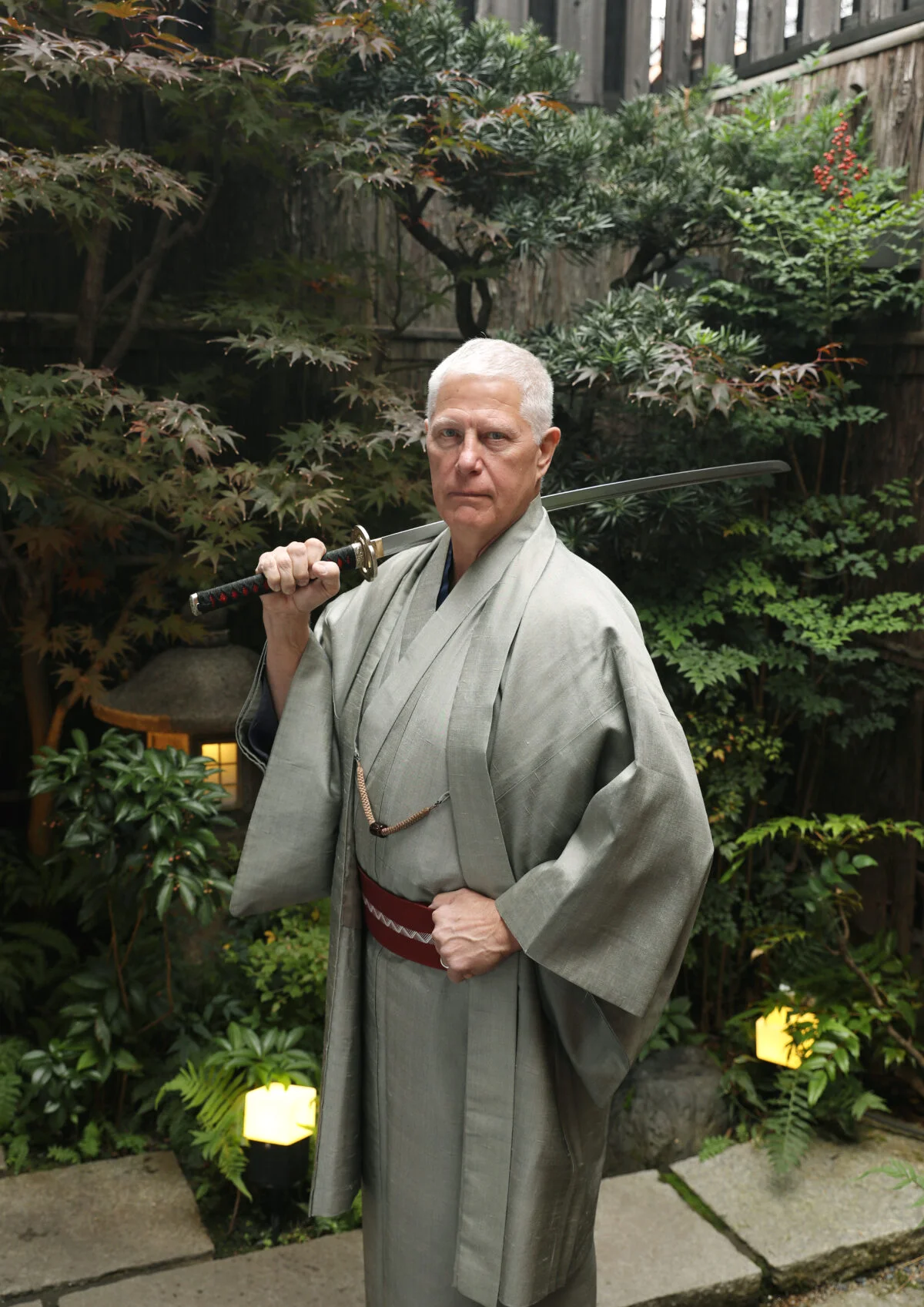
Hand and Arm Movements:
- Crossed arm positions: Cross arms at the wrists for balanced, composed appearance
- Fan extension: Hold fans outward while maintaining dignified, respectful posture
- Sleeve management: Use hand positioning to showcase kimono sleeve details and craftsmanship
Dynamic Male Poses:
- Forward step positioning: Place one foot slightly forward to suggest movement and purpose
- Profile angles: Use three-quarter and profile angles to highlight kimono silhouette
- Traditional accessories: Incorporate masculine accessories like traditional swords (katana) or formal fans
Cultural Considerations for Male Kimono Photography
Male kimono poses should reflect traditional Japanese concepts of masculine dignity and respect. Avoid overly casual or inappropriate gestures that might diminish the garment’s cultural significance.
Captivating Back View Kimono Shots
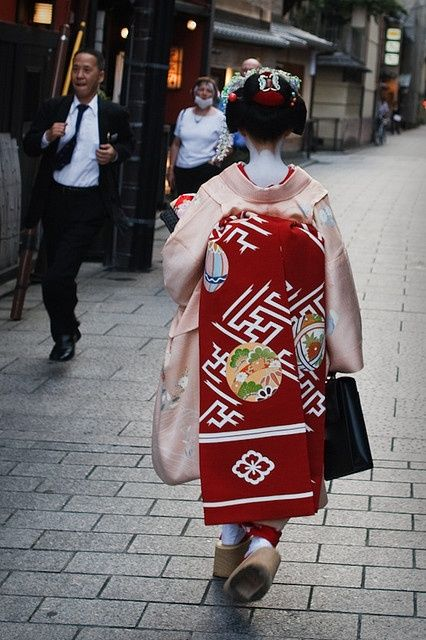
Showcasing Kimono’s Most Beautiful Details
Back view kimono photography highlights the garment’s most intricate and beautiful elements – the obi design, fabric patterns, and overall silhouette. These shots require specific techniques to create compelling compositions.
Professional Back View Techniques:
Obi and Pattern Emphasis:
- Obi positioning: Showcase the decorative obi belt through strategic body positioning
- Pattern revelation: Angle your body to display kimono patterns from shoulder to hem
- Fabric flow: Create natural fabric movement that emphasizes the kimono’s graceful draping
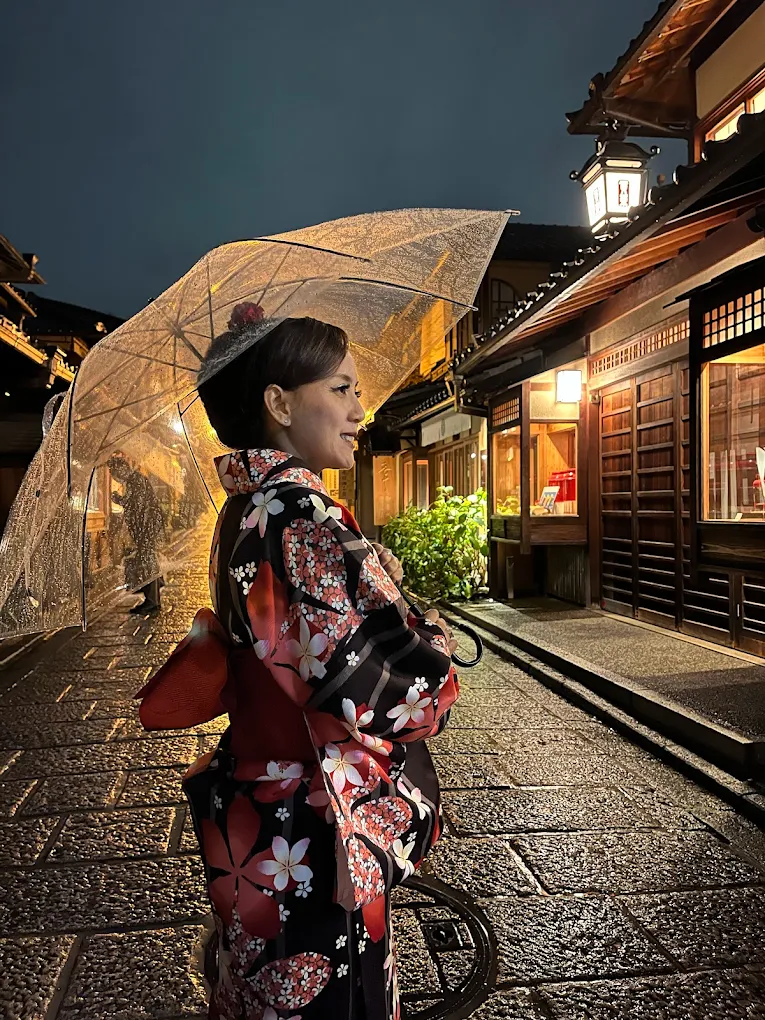
Head and Neck Positioning:
- Demure head turns: Turn your head slightly for engaging yet modest expressions
- Neck angle: Create elegant neck lines that complement the kimono’s neckline
- Hair styling: Ensure hairstyles complement and don’t obscure kimono details
Movement and Posture:
- Knee bends: Slightly bend one knee to suggest natural movement and grace
- Sleeve interaction: Lightly grasp kimono sleeves or obi for dynamic positioning
- Walking poses: Capture mid-step moments that show fabric movement and flow
Ideal Locations for Back View Kimono Photography
Traditional Settings:
- Japanese gardens with seasonal flowers and traditional landscaping
- Historic temples and shrine courtyards
- Traditional architecture with wooden elements and paper screens
- Stone paths and traditional bridges
Modern Locations:
- Contemporary Japanese architecture with clean lines
- Urban settings that provide cultural contrast
- Modern gardens with minimalist design elements
Professional Kimono Photography in Kyoto

Experiencing Authentic Kimono Photography in Japan’s Cultural Capital
Kyoto offers unparalleled opportunities for authentic kimono photography, combining traditional rental services with some of Japan’s most beautiful cultural locations. Professional kimono photography services in Kyoto provide complete experiences that capture the true essence of Japanese culture.
Why Choose Kyoto for Kimono Photography:
Authentic Cultural Settings:
- Historic districts like Gion and Arashiyama provide authentic Japanese backdrops
- Traditional architecture creates culturally appropriate photoshoot environments
- Seasonal beauty offers year-round photographic opportunities
- Professional photographers familiar with cultural protocols and best practices
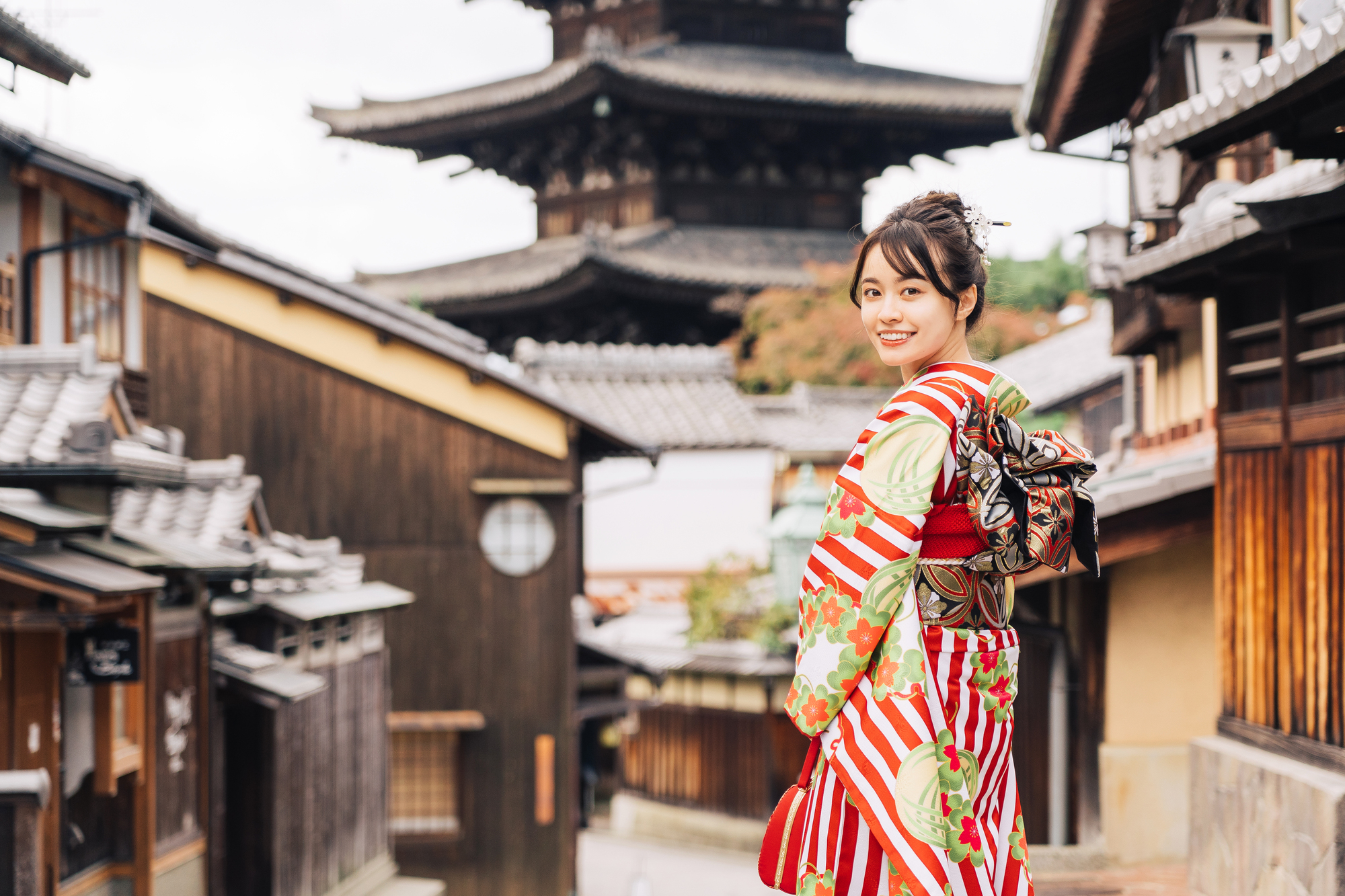
Complete Kimono Experience Services:
- Extensive kimono rental collections featuring authentic designs and high-quality fabrics
- Professional styling services including traditional hairstyling and makeup
- Expert guidance on cultural protocols and appropriate posing techniques
- Convenient locations near major photographic attractions
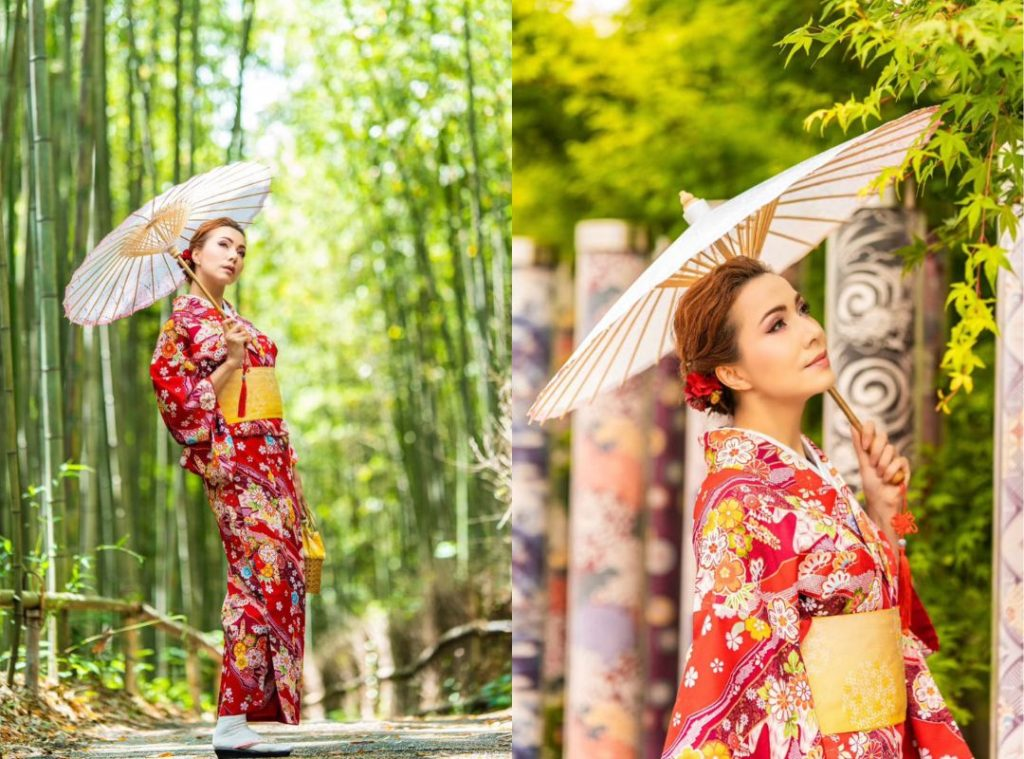
Professional Kimono Photography Services
For visitors seeking professional kimono photography experiences in Kyoto, AllPhoto Kyoto offers comprehensive photography services that combine authentic kimono rental with expert photography. Their experienced photographers understand both traditional Japanese aesthetics and modern photography techniques, ensuring your kimono photos capture both cultural authenticity and contemporary appeal.
Professional Photography Benefits:
- Expert posing guidance from photographers familiar with kimono photography
- Access to exclusive photoshoot locations and optimal lighting conditions
- High-quality editing and post-processing services
- Cultural sensitivity and respect for traditional Japanese customs
- Multilingual services for international visitors
Advanced Kimono Posing Tips
Professional Techniques for Exceptional Kimono Photography
Seasonal Considerations:
- Spring poses: Incorporate cherry blossom themes and gentle, renewal-focused expressions
- Summer techniques: Use fans and cooling accessories for comfort and visual appeal
- Autumn photography: Coordinate with changing foliage and harvest themes
- Winter compositions: Emphasize the kimono’s warmth and elegance against snowy backdrops
Lighting Optimization:
- Golden hour photography: Shoot during early morning or late afternoon for warm, flattering light
- Shade techniques: Use natural shade to avoid harsh shadows on kimono fabric
- Reflector usage: Employ reflectors to enhance facial lighting and kimono details
- Indoor lighting: Understand how to work with traditional Japanese interior lighting
Composition Mastery:
- Rule of thirds: Position kimono elements along compositional guidelines
- Leading lines: Use architectural elements to guide viewer attention
- Negative space: Employ empty space to emphasize kimono elegance
- Symmetry and balance: Create harmonious compositions that reflect Japanese aesthetic principles
Cultural Sensitivity and Respect
Always remember that kimono photography should honor Japanese culture and traditions. Research appropriate behavior, understand the cultural significance of different kimono styles, and maintain respectful attitudes throughout your photoshoot experience.
Conclusion: Mastering the Art of Kimono Photography
Kimono photography combines technical skill, cultural understanding, and artistic vision to create stunning images that celebrate Japanese tradition. Whether you’re planning a professional photoshoot in Kyoto or capturing memories during your Japan travels, these posing techniques will help you create authentic, beautiful kimono photographs.
Remember that the best kimono photos balance technical excellence with cultural respect. Practice these posing techniques, understand the cultural significance of the garments you’re wearing, and work with professionals who can guide you through authentic Japanese photography experiences.
For the ultimate kimono photography experience in Kyoto, consider booking with AllPhoto Kyoto for professional guidance, authentic locations, and expert photography services that will help you create stunning kimono memories that last a lifetime.
Ready to Book Your Kimono Photoshoot?
Start planning your authentic Japanese kimono photography experience today. With proper preparation, cultural respect, and these professional posing techniques, your kimono photos will capture the timeless elegance and beauty of traditional Japanese culture.



コメント